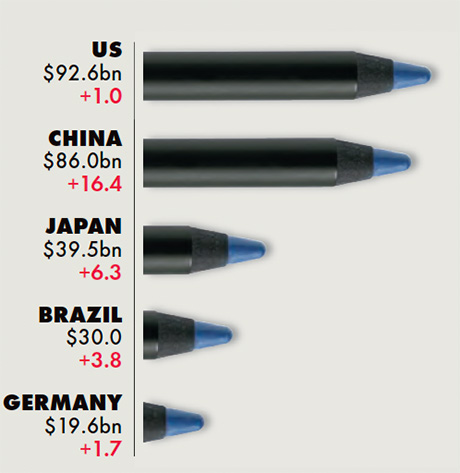Report introduction: At a glance
What's in this report?
Introduction
Top 5 trends:
4. The gamification of e-commerce
Forecast top 5 largest beauty and personal care countries, 2021

Source: Euromonitor International
Key challenges addressed
The onset of the global pandemic has triggered a great reset in beauty and personal care. For brands and retailers in 2021, the challenge will be how they can adapt to the new reality that has emerged.
From physical store and salon closures to the shift in consumer usage and buying habits, industry players have had to adapt their business models quickly in order to survive.
“A recession or pandemic is an eye-opener for brands and retailers. When things are trading well they tend to work in a way that they have before, but a recession or pandemic brings to the surface what wasn’t working,” says Wizz Selvey, founder and CEO of brand and retail consultancy Wizz & Co.
“There is an opportunity to rework strategies, to adapt and move in a different direction. Companies should think about how to scale the mix going forward, through which channels, and think about their consumer and how they have changed. Look at the whole business plan,” advises Selvey.
The economic fallout of Covid-19 will be a major concern for the 2021 consumer. In a Numerator survey, 62% of consumers listed the economic repercussions of the pandemic as one of their biggest worries.
Gabriella Beckwith, Senior Beauty & Fashion Analyst at Euromonitor International, says: “The steady rise in unemployment rates in 2021 will adversely impact disposable incomes, causing discretionary spending to contract, as consumer priorities and purchasing decisions will transition to a focus on necessities.
"This will have huge implications for beauty and personal care as necessities like bath and shower and oral hygiene products take precedence over discretionary spending categories, such as fragrances and colour cosmetics.”




